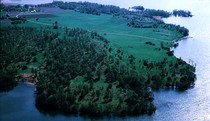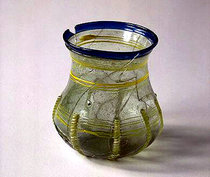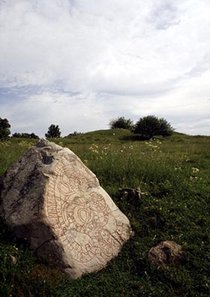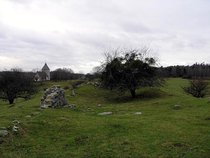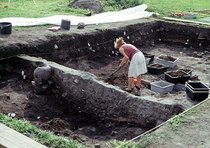Birka and Hovgården (World Heritage)
The trading centre Birka on the island of Björkö in Mälaren, together with Hovgården on the neighbouring Adelsö, constitutes part of Sweden’s irreplaceable cultural heritage.
When Birka was founded, 1,200 years ago, Björkö was a bay of the Baltic Sea. Due to land elevation since then, the bay has been cut off from the sea, and is now the Mälaren lake. For 200 years, from the 8th to the 10th century, Birka was a central point for Nordic trade. On the other side of the bay on Adelsö lay a royal estate, later to become known as Hovgården*. Researchers believe that Birka was established on a royal initiative in order to control and expand trade. The king at this time, however, was not all-powerful, and relied on alliances with various chiefs. This meant that Birka was important for the whole of central Sweden.
Furs, slaves and other goods were exported from Birka, initially to western Europe and later to the Muslim caliphate. Silver coins from Muslim countries flooded into Sweden, together with pearls and other exclusive items from Russia and the orient.
Black earth
Houses in Birka were positioned in neat rows, and could be up to 8 metres long and 5 metres wide. The walls were of wickerwork and clay, or horizontal planks in post-and-plank construction. Smoke lay permanently over the town from the many open fires. Waste and ash were left where they fell, and eventually formed a layer, several metres thick, now known as “black earth”.
The town was home to many types of artisan such as smiths, and craftsmen working in bronze or pearls, those making combs or shoes, and weavers. The maximum number of inhabitants was probably between 500 and 1,000, although not all houses were used all year round. Many people from outside Sweden also stayed in the town for longer or shorter periods. This was a place for rich and poor, chiefs, simple folk and bondsmen.
Archaeological excavation has shown that Birka was evacuated around 975. The reason is unclear, and many ideas have been put forward, such as the blockage of the water pathway over Södertälje due to the land rise. In recent years, excavations of the defensive wall at Birka and the surroundings have suggested that Birka was abandoned after a battle. The stronghold has been burned and the battle field was never cleared of arrows and broken swords.
It was around 975 that Sigtuna was founded, and it is likely that this affected the decline of Birka in some way, but researchers disagree about the nature of the connection.
A failed missionary
A monk, Ansgar, arrived at Birka in 830, sent by the French Emperor Louis the Pious. Ansgar was well-received and was granted permission by King Björn to preach in the town. Some of the inhabitants were converted and baptised into Christianity. Ansgar returned to Birka some 20 years later and it is believed that he arranged the construction of a chapel, but its location is unknown. The success of Ansgar’s mission proved to be fleeting, and several hundred years were to pass before
Sweden adopted Christianity.
There are six burial fields on Björkö, the largest of which is Hemlanden. It is located just outside the protective earthworks and contains around 1600 graves. Most of these appear as rounded mounds, although there are some triangular graves and some stone ships.
The graves at Birka that have received most attention are the chamber graves that are located around the earthworks, outside of the defensive wall. The dead have been buried in expensive costumes here, and are accompanied by many expensive items as grave gifts, and in some cases by fully equipped horses.
The stronghold at Birka is today visible as a semicircular earthwork that surrounds the defensive mound. Standing at the top you can see for miles. A cross has been erected at the highest point of Birka, in memory of Ansgar’s mission. Church services are held at summer weekends in the Ansgar Chapel. Opened in 1937 and designed by Lars Israel Wahlman, the chapel has decorations from many famous artists of the period.
World Heritage
Birka and Hovgården were added to the list of invaluable world cultural heritage in 1993. The motivation of the World Cultural Heritage Committee was as follows:
“The Birka-Hovgården sites are well-preserved examples of the commercial network of the Vikings during the 200 years when they expanded economically and politically throughout Europe. Birka is one of the most complete and untouched trading centres from the Viking age, 700-900.”
The land on Björkö has been cultivated both before and after the era during which Birka flourished, and one of the farms in the village of Björkö is active today. Otherwise, the landscape is managed by the owner, the Swedish National Heritage Board, aided by clearance and grazing animals.
Björkö is home to a museum with a permanent exhibition telling the story of Birka and displaying artefacts from the archaeological excavations. Temporary exhibitions are set up each summer.
Links
UNESCO and the World Heritage List
Birka and Hovgården
Boat trips during the summer from Stockholm and other places. Strömma Kanalbolaget.

